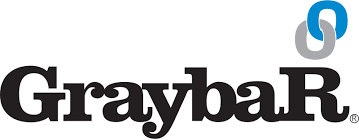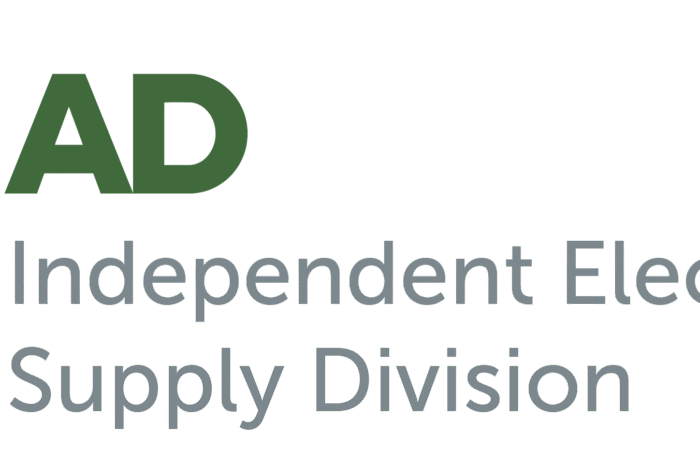Electrical Distributor Q1 2019 Performance. See Who Grew

It’s earning season so time to answer the question of “how did publicly held companies who focus on the electrical market perform during Q1?” Which then leads to the other question of “is this representative of the industry or a phenom to large, publicly held companies?” (or, the corollary is, “are mid-small size manufacturers and distributors who focus in niches or geographic areas outperforming their larger competition?”
So, let’s look at distributors:
Graybar
While Graybar isn’t publicly held, they do share some information on a quarterly basis, and Q1 was a good quarter for Graybar.
- According to their press release, the reported 8.6% growth.
In reviewing their 10-Q,
- Overall net sales was $1.777.8 billion, a $140.1
million increase. And gross margin increased 8.8% to a 19.1% rate
- Construction segment was 59.8% of sales, up 1.1% vs 2018. Sales for this segment were up 10.9%
- Industrial and utility is 20.7%, down 1.4% from 2018. Sales for this segment were up 10.7%
- CIG (Commercial, Institutional and Government) is 19.5%, down .3% vs 2018. Sales for this segment were up only .7% (some may be due to the government shutdown as Graybar has Federal government contracts)
- Merchandise inventory (or at least its value based upon LIFO) increased to $696.3 million, an increase of almost $40 million
- Performance represented “highest first quarter net sales and net income in Company history.”
- “Continuing to pursue digital transformation”, “enhancing efficiency and productivity in the supply chain”
- SG&A increased only $10M vs 2018 Q1, up only 3.9%. SG&A as a % of net sales is 15.5%.
Overall, strong Q1 performance.
WESCO
WESCO is, perhaps, the “alter ego” to Graybar given that their business mix is more skewed to the industrial and utility market and WESCO has greater exposure to the Canadian market.
From their press release:
- Organic sales, overall, grew 1%, due to the
number of workdays and foreign exchange rates which negatively impacted net
sales by 1.6% and 1.3% respectively while acquisitions benefited the sales number
by .3% (so, when compared to Graybar,
significant underperformance as both companies had the same number of workdays.
The currency issue may impact WESCO more and Graybar did not benefit from prior
year acquisitions. Given supplier price increases … Perhaps this is a business
mix issue?)
- They maintained their full year outlook of 3-6% growth and growing “faster than the market” (which means a much faster growth rate for future quarters. While they may outperform the overall market given the national nature of the business, is that the correct benchmark if other nationals / marketing groups outperform WESCO?)
- Gross margin improved 40 basis points to 19.5%
- SG&A increased 50 basis points to 15.1%, up from 14.6%
- Operating profit as a % of net sales was 3.6% with a 2019 goal of 4.3-4.7%
From their earnings slides:
- US was flat – actually down .3% (the only distributor who shares data that reported a decline), Canada up 3%. Overall, down 1.6% with “core” (excluding acquisitions) being down 1.9%!
- “Improvement” in March and April but April organic sales only “low single digits”
- Estimated pricing impact of 2% (so, if pricing is up 2% and sales in US is flat, means that sales essentially went down. Given other distributors’ performance, appears WESCO may have lost share?)
- “Core” SG&A is up 1% (concern … if WESCO doesn’t increase sales in Q2 / Q3 will it seek to meet its profit and EPS numbers by reducing SG&A?)
- Industrial business was down .3% and down 2% sequentially (interestingly, in looking at manufacturer performance, none mentioned the industrial market being down)
- Construction sales up 2% overall but down 1% in the US and down, overall, 8% sequentially. (Again, significant difference vs competitors … and with Rexel and Graybar up 10%?!)
- Backlog down 2% (while others report an increase in their backlog?)
- Utility business flat overall but up 3% in US.
- Commercial, Institutional and Government business up 2% overall but down 5% in US!
And some business profile information:
- 36% of business is industrial accounts
- 33% is construction
- 16% is utility and 15% is commercial / intuitional and government
From a product viewpoint:
- 40% “general supplies”
- 16% communications and security (more datacom oriented)
- 14% wire / cable / conduit
- 11% lighting and sustainability
- 11% distribution equipment and controls
- 8% automation, controls and motors
Compared to reporting competition, WESCO seems “challenged” and underperformed during the quarter. The only positive was margin improvement but if this is based upon supplier concessions, suppliers may ask “what are they getting” which gets back to “which distributors to support”? The question becomes, is WESCO’s performance an execution issue or a “one-off” marketplace / customer alignment challenge?
AD
AD shared their quarterly performance in a press release.
While the headline number, encompassing all of their divisions, was 7%, their US operations were up only 5% and their electrical group (US, Canada and Mexico) was up only 3%.
According to Bill Weisberg, “… Canada was a little softer than expected as were parts of our US Electrical operations.”
IMARK shared that their members’ Q1 purchases through the group were up 8.5%, indicating strong growth from its overall 800+ members as well as support for IMARK suppliers.
Rexel
From Rexel’s earnings call with a focus on North America / US and some macro issues:
- Globally, sales grew for 10th consecutive quarter powered by North America, selected European countries and China.
- North America, which represents 37% of sales,
same day sales were up 8.5%
- US represents 80% of North America sales
- US sales up 9.8%!
- Industrial up double digits
- Residential and commercial up strongly
- Believe has taken share in the US
- Have opened 52 new branches in US since 2017 and starting to see some traction that is supporting growth. Added 1.1% in sales and 2,700 new customers
- “Recovery” at Gexpro
- Investing in
- Sales reps
- Inventory
- Branch openings
- Branch refreshes
- Regional approach working (8 regions)
- Double digit growth in California, Texas, Florida, Denver
- Lower growth in Midwest and East
- Digital revenue, globally, is 17.2% of sales. Almost 25% in Europe.
From analyst questions:
- Backlog is at a very high level
- Digital segment in North America was “around 10%” but is growing. (Caution, “digital” does not mean only “click and ship”. Companies usually integrate EDI, punch-outs and in some cases email, storeroom management and vending machines when they say “digital revenue”.)
- Rexel allocates about 1% of sales to CapEx. About 2/3rds of this is for IT / digital.
- Saw 3% price impact in Q1 in North America
- Opened 4 new branches in US in Q1, planning another 48 for a total of 100 since 2017
- Since 2017 have refreshed 25% of US branches
- Adding SKUs to branches
- GE Industrial Solutions (now ABB) is very important to Rexel US
- Finding, in Europe, that customer connectivity via digital interaction is improving customer loyalty vs a non-connected customer. US digital is about 10% and goal is to double. Rexel uses SAP’s Hybris platform.
Rexel appears to have conducted a significant turnaround in the US to have almost 10% growth. A combination of new locations (new business) and account penetration.
So, what may it mean?
- Rexel is growing and took share. IMARK members, in aggregate, and Graybar also had significant sales growth. AD’s US electrical business had growth, however, coupled with WESCO’s performance, it appears that the industrial market may be having some challenges / experiencing flat / slow growth.
- Construction market is strong. This correlates what we’ve heard from many distributors as it relates to their project business. Stock and flow business is a little bit of a different story. Also hearing of a number of distributors “better managing their inventory”.
- Industrial market is experiencing slow / flat performance
- In parts of the country January and February were “sluggish” with March and April improving. While weather in some parts of the country, federal shutdown affected some and uncertainty in the marketplace affected others. And yes, we’re hearing some companies are out-executing others.
- Given the breadth of performance, if you are a manufacturer, and maybe a rep, do you focus your efforts on those distributors who you feel are better executors in the marketplace or do you spread your efforts “equally?” If economists are right (a huge “if”) a slowdown, or growth at a lower rate, will be / is occurring, so do you subliminally start thinking of whom to support incrementally? If you are a distributor that is performing, are you promoting your performance, highlighting your strengths and showing key manufacturers how you can help them take share in your marketplace … and discussing demand generation and share-taking initiatives?
All of the above companies will persevere over the long haul, the question becomes, which ones move their needle, and their suppliers’ needles sooner and faster?























